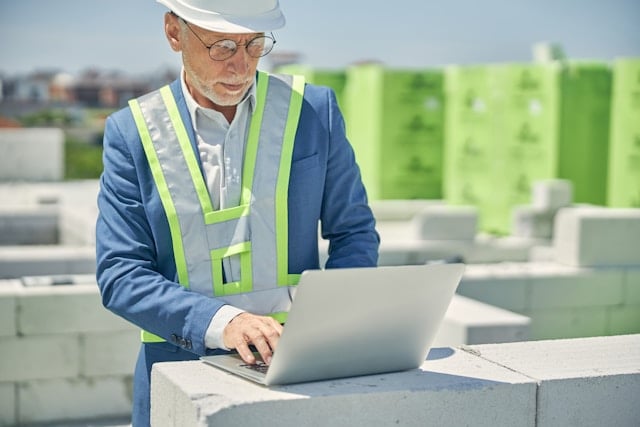Human Error in Construction: Causes, Impacts, and Solutions

Human error is an inevitable part of any industry, but in construction, mistakes can be costly, dangerous, and time-consuming. From minor miscalculations to major oversights, human errors can lead to delays, budget overruns, compromised safety, and even structural failures. Understanding the common causes of human error in construction and how to mitigate them is essential for delivering high-quality projects on time and within budget.
1. Common Causes of Human Error in Construction
There are several factors that contribute to human error in construction projects. Recognizing these causes is the first step towards reducing their frequency and impact.
Lack of Training or Experience: One of the leading causes of mistakes on the job site is insufficient training or experience. Workers who are unfamiliar with certain materials, tools, or procedures are more likely to make errors. This is especially true when dealing with new technologies or building methods that require specialized skills.
Poor Communication: Construction projects involve multiple teams, from architects and engineers to contractors and laborers. Miscommunication between these groups can lead to misunderstandings about project specifications, timelines, or materials, resulting in costly mistakes.
Fatigue and Stress: Construction is a physically demanding industry, and workers are often subject to long hours, tight deadlines, and pressure to complete tasks quickly. Fatigue and stress can reduce focus, leading to errors in judgment or execution.
Inadequate Supervision: Without proper oversight, small mistakes can go unnoticed until they become larger issues. Supervisors play a critical role in catching errors early and ensuring that teams are following best practices and safety protocols.
Design Flaws: Errors can also occur at the planning stage. Inaccurate measurements, poor architectural designs, or incomplete blueprints can create challenges that result in mistakes during construction. If these flaws are not identified early, they can lead to delays and costly rework.
2. Impacts of Human Error in Construction
The consequences of human error in construction can vary depending on the severity of the mistake, but the impacts are often significant in terms of both time and money.
Cost Overruns: Rework is one of the biggest financial impacts of human error. Fixing mistakes often requires additional labor, materials, and time, which can cause a project to go over budget. In extreme cases, errors may result in demolition and rebuilding of sections of a structure.
Delays: Even small errors can cause substantial delays. A miscalculation in the initial stages of a project may require recalibration of measurements, delays in material orders, or waiting for new approvals. These delays can snowball, affecting the entire construction timeline.
Compromised Safety: Safety is a primary concern in construction, and human errors can directly impact worker safety. For example, failing to properly secure scaffolding or mishandling heavy equipment can lead to accidents, injuries, or even fatalities on the job site.
Structural Integrity Issues: Errors in measurements, materials, or installation can compromise the integrity of the building. These issues may not always be immediately apparent but can lead to problems later, such as leaks, cracks, or even catastrophic failures.
Damage to Reputation: Repeated errors or high-profile mistakes can damage a company’s reputation. Clients may lose confidence in a contractor’s ability to deliver quality work on time, resulting in lost business and opportunities.
3. Solutions to Minimize Human Error in Construction
While human error can’t be entirely eliminated, there are several strategies that can significantly reduce its frequency and impact on construction projects.
Comprehensive Training and Skill Development: Ensuring that all workers, from laborers to supervisors, are properly trained is crucial. This includes training in the use of new materials and technologies, as well as ongoing professional development to keep up with industry advancements.
Improved Communication Systems: Establishing clear lines of communication among all stakeholders can prevent misunderstandings. This includes regular meetings, detailed documentation, and using project management software that tracks progress, shares updates, and flags potential issues.
Technology Integration: Modern construction technologies can help reduce human error. For example, Building Information Modeling (BIM) allows for 3D visualizations and precise measurements, helping to prevent design flaws and miscalculations. Drones, GPS, and AI can also aid in project monitoring and quality control.
Proper Supervision and Inspections: Experienced supervisors play a key role in identifying and correcting mistakes before they become costly. Regular site inspections, combined with proactive oversight, can catch errors early and ensure that workers are adhering to safety and quality standards.
Fatigue Management: Construction companies should recognize the risks of overworking their employees. Implementing strategies such as rotating shifts, ensuring adequate rest breaks, and managing workloads effectively can help reduce fatigue and stress, leading to fewer mistakes on the job.
Detailed Planning and Design Review: A thorough review of project plans and designs before construction begins can help catch errors in the early stages. Collaborating with architects, engineers, and contractors to scrutinize blueprints and identify potential problem areas can save time and money down the road.
Human error is a natural part of any construction project, but its impact can be mitigated with proper planning, training, and technology. By addressing the common causes of mistakes—such as poor communication, lack of training, and fatigue—contractors can reduce the likelihood of errors and improve project outcomes. Whether you’re managing a small renovation or a large-scale development, minimizing human error is key to delivering safe, efficient, and cost-effective construction.
For builders in the UAE looking to streamline their projects and reduce costly mistakes, MawadOnline provides access to high-quality construction materials that help ensure your projects are built with precision and care.









